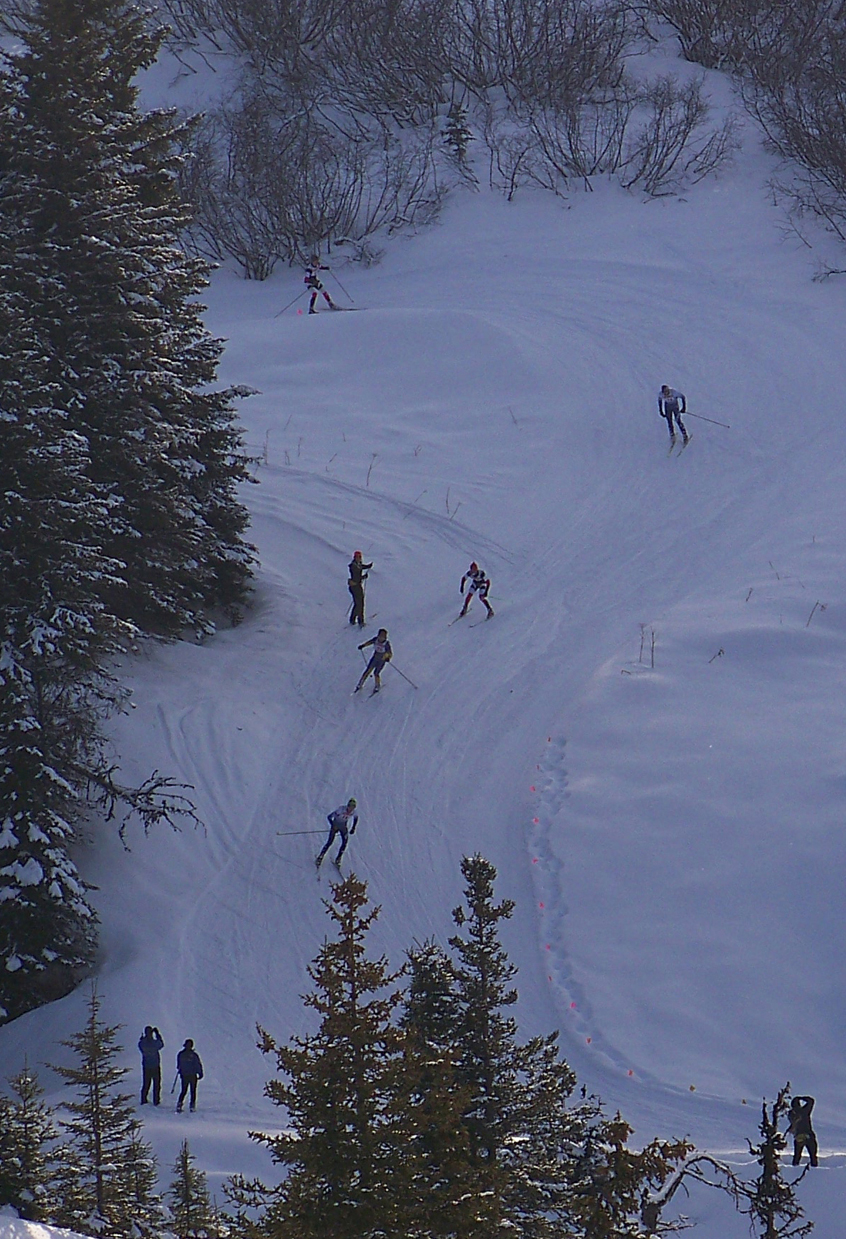Attracting hundreds of skiers and with a lengthy Homer history, the Besh Cup continues on Homer’s Lookout Mountain Trails Jan. 18-19.
“It’s been around for a long time,” said Jan Spurkland, president of the Kachemak Bay Nordic Ski Club. “In the 1980s, it was called the Tang Cup and then in the 1990s, it got dedicated as the Besh Cup as a memorial to Tom Besh.”
Growing up in Anchorage, Spurkland skied in the Besh Cup and participated in both the Junior Olympics and the Arctic Winter Games in the early and mid-1990s.
The 2013-2014 three-part series began with two days of racing in Anchorage in December and wraps up in Fairbanks Feb. 1-2. Results from the races are used to select Alaska’s teams in the United States Ski and Snowboard Association Junior Olympic National Championships, as well as the Arctic Winter Games. Trophies are awarded to the top junior male and junior female in the series, with Cross Country Alaska award medals in each of the age classes.
The event gets is name from Tom Besh, an Alaska skiing pioneer who grew up in Anchorage and was an All-American collegiate skier for Western State University and on the U.S. Ski Team.He was a full-time ski coach for the University of Alaska Anchorage, served as the U.S. Ski Association’s Alaska Division coach and was assistant coach for the U.S. Olympic Nordic team at the 1980 Winter Olympics in Lake Placid, N.Y. In 1993, at the age of 45, Besh was killed in an airplane accident.
This year’s Homer races begin at 10 a.m. Jan. 18 with a freestyle sprint race in which all participants ski once in the morning for a qualifying time that determines their afternoon participation.
“For skiers who make it into the final round, they’ve probably skied four times that day,” said Spurkland. “Then Sunday, there’s a more traditional distance race for the younger kids skiing three kilometers and the older kids skiing 10 kilometers classic technique, more traditionally what you would consider a cross country ski race. At the end of the day, they compile the results.”
The Sunday races begin at 11 a.m.
On the Kenai Peninsula, the race is held in Homer and on Soldotna’s Tsalteshi Trails on alternating years, attracting fewer participants than Anchorage or Fairbanks, “but still 200-250 racers from all around the state,” said Spurkland. “It’s a neat economic boost for the community at a time when there’s not a whole lot of other stuff going on.”
ConocoPhillips is the main sponsor of the race, but, as in past years, Spurkland anticipates support from local businesses, as well.
The Lookout trials were developed seven years ago with the Besh Cup, middle and high school races in mind, according to Spurkland. However, the event’s history in Homer dates back many years. There was a time the trails were developed on the Strutz homestead near Ohlson Mountain.
“Actually, they started over by the downhill ski area hut way back when I was a little kid, probably in 1967,” said William Strutz, recalling the efforts of Dave Schroer and others who painstakingly set the course. “He’s the guru of gurus when it comes to grooming trails in the early 1960s.”
Grooming involved Schroer going over the course with a double-track Ski Doo Alpine, towing two pieces of angle iron.
“Immediately following him were others, literally stamping in a trail between those two cut grooves,” said Strutz, who recalled weather so stormy that racers dreaded being the first one across the starting line “because your ski poles were blowing sideways as you were trying to go across the field.”
Schroer was one of a “lead group of about 10 guys” that pitched in to make skiing possible in and around Homer.
“Down here it was unique because there was a cool group of people with everyone helping everyone,” said Strutz. “Everyone looked forward to coming to Homer for that race. It was a huge crowd and everyone had a ball.”
Strutz spent part of his childhood in Anchorage, where he was coached by Besh.
“He was a fantastic gentleman, literally involved in everything from trail grooming to coaching. He was invited numerous times to coach internationally, but I think his heart was in developing … Alaskan skiers,” said Strutz. “He was a super guy.”
Dave Brann credited Bob Maculey and the Besh Cup with teaching him how to time ski races.
“It wasn’t so much volunteering as being told to do it,” said Brann, laughing. “Bob and Dave (Schroer) really were the mentors for people involved in the ski areas around here, as far as competitive skiing goes. Al Davis is another one who was involved a lot … And Jake McLay started the initial ski program way back when. … I was pretty much just a little worker bee.”
The Besh Cup was an opportunity for local skiers to see big names in Alaska’s ski circle.
“It was always kids that every week you saw their names in the paper and twhen you saw them lining up on the starting line, it was kind of a celebrity thing,” said Brann.
Spurkland agreed.
“The neat thing about these qualifiers is they bring down a very elite level of junior racers from all around the state. If you’re up there watching these races, you’re watching possible future Olympians,” said Spurkland. Among those big names are Nina Kempel of Anchorage who competed in the 2002 Salt Lake City Winter Olympics; Kikkan Randall, also of Anchorage, a three-time winter Olympian; and Homer’s very own Larry Martin, who competed in the 1980 Winter Olympics.
“I equate it to if Lebron James was playing at Homer High School basketball,” said Spurkland.
For more about the Besh Cup, visit crosscountryalaska.org.
For more about the history of skiing in Homer, visit Alaska Lost Ski Areas Project, alsap.org.
McKibben Jackinsky can be reached at mckibben.
jackinsky@homernews.com.



